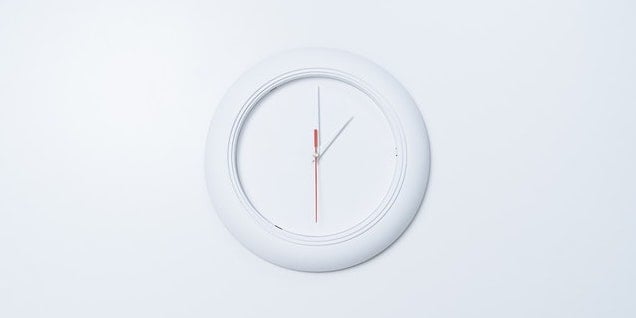
3 things to know about urgency marketing

Urgency marketing can offer a critical solution to many of your immediate marketing needs. But what exactly is it? And what else should you know about it?
We’ve written a list of three facts about urgency marketing, including strategies you can use and benefits you don’t want to miss out on. But first, let's talk about what the concept even means...
What is urgency marketing?
This might be your first time ever hearing about urgency marketing, and that’s okay — you’ve come to the right place.
We want to start you off with a solid foundation and that means having a clear understanding of what urgency marketing is. This marketing strategy helps form promotions that will spark immediate action in consumers. It's a consumer motivation tool. And you can point it at any marketing activity you're trying to drive.
Though you might not realize it, you’ve encountered urgency marketing before. The implementation of checkout timers, flash promotions, limited-release launches and events like Black Friday and Amazon Prime Day are prime examples of urgency marketing. These tactics and campaigns fuel feelings of anticipation and FOMO that prompt consumers to take action. We’ll talk more about these psychological responses later.
If you’re looking to inspire specific responses from your customers in order to drive significant movement, urgency marketing is the answer.
3 things to know about urgency marketing
Now that you have an idea of what urgency marketing is, let's talk about what else you should know about it. Here are three things:
1. Urgency marketing leverages psychology
The mind is a powerful thing and so is a brand that understands how it works.
Urgency marketing is about encouraging forward movement in your target audience. It’s also about understanding the human brain for the benefit of all involved.
Urgency marketing typically creates urgency through key psychological elements, such as: anticipation, scarcity, social proof and competition.
The feeling of anticipation occurs when we as humans are looking forward to an upcoming experience that we predict will bring us joy or pleasure. As a brand, you can leverage these emotions by promoting a product or service that your customers have expressed a love for or by letting them know of a valuable event that will be happening in the future.
Scarcity is a result of encountering an item or event that is limited in supply. As humans, we want the things we can’t have. In fact, we become hyper focused on them when we think we might not be able to get them, which increases their perceived value and convinces us that we need them. In order to achieve our desired outcome, we’ll move quickly in hopes of claiming the item or event as our own before it’s gone for good.
Ever believed in the value of a product solely because someone you trusted was of that opinion? You were experiencing social proof, the psychological idea that humans are prone to follow the lead of people they know and trust or opinions that come in large quantities. When we see other people are interested in a product, we develop a stronger desire to have it as our own.
Competitions are all about competing, and this can mean consumers competing against each other or against a clock. When you create competitions through tactics like countdown timers, customer face-offs or other tactics, you mold an experience that facilitates forward movement.
2. There are multiple forms of urgency marketing
There are multiple ways your brand can create urgency in your marketing campaigns. For example, you can infuse it into word choice, create deadlines around marketing campaigns and/or create urgency around consumer incentives you're offering. Let's talk about each.
First, words have power. They can orchestrate certain thoughts, behaviors and actions. Urgency is one of them. Certain words like “only,” “limited time,” or “last chance” can create those feelings of anticipation or FOMO that we talked about earlier.
Next, let's discuss deadlines. When we know that we only have a certain amount of time before our chance to accomplish something runs out, the stakes get higher. The desire to purchase a product, attend an event, acquire a service or patronize a business becomes all the more attractive because we know we might not get the opportunity to do so again.
And finally, humans love incentives. There’s something about getting rewarded that makes an experience special for the person involved. Rewards bring about feelings of joy, something that consumers can’t get enough of and brands can’t afford to hold back on.
(Check out these tips on how to add urgency to your future marketing initiatives.)
3. Urgency marketing offers numerous benefits
Urgency marketing can be used to encourage immediate movement in all sorts of marketing campaigns. Interested in boosting email acquisition? Try urgency marketing. Want to promote a marketing collaboration? Urgency marketing will do the trick. Have certain e-commerce goals? Yep, you guessed it — urgency marketing can help with that too.
Again, although traditionally seen in those one-day events, like Amazon Prime Day and Black Friday, urgency marketing can be aimed at any marketing conversion you need to drive at any time. It keeps your campaigns from feeling stagnant and helps to encourage high customer engagement.
These three things to know are only a start in terms of all there is to know about urgency marketing. Stay tuned to this blog for more.

Lindsay Keener is a brand journalist for Quikly. She covers stories that help to inform and educate consumer-facing marketers.

